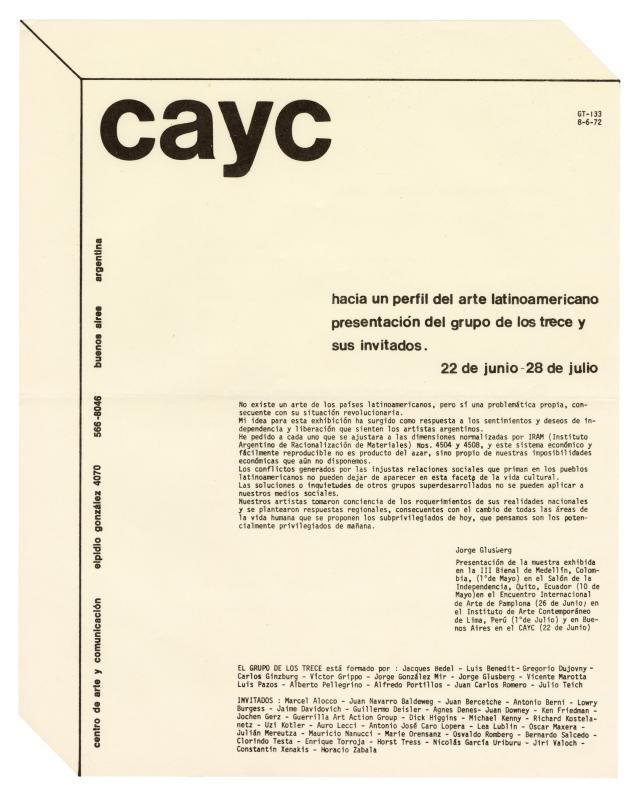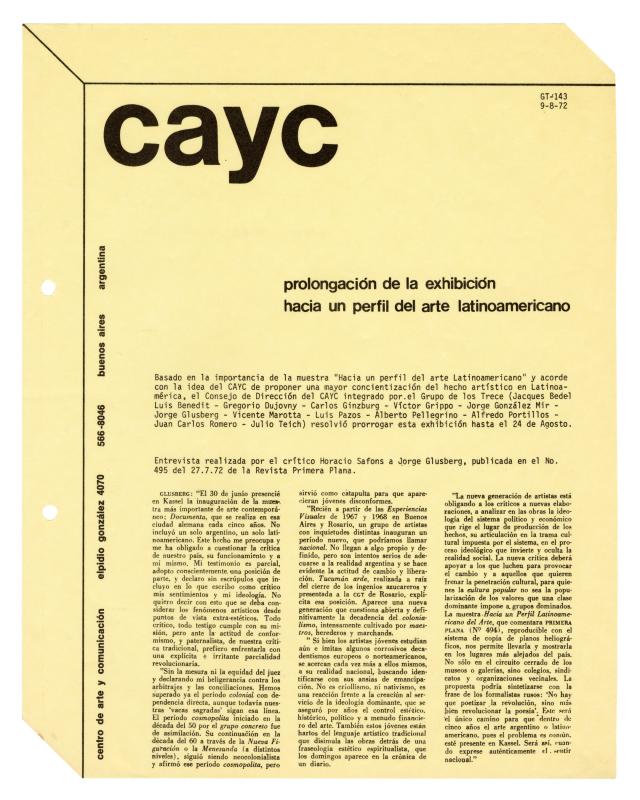Ever since it was founded, the CAYC (Centro de Arte y Comunicación), helmed by the cultural promoter, artist, and businessman Jorge Glusberg, was intended as an interdisciplinary space where an experimental art movement could flourish. The establishment of collaborative networks connecting local and international artists and critics played an important role in this process. In addition to the exhibitions, a program of different activities provided viewers with a greater chance of seeing the latest innovations in art and scientific thought. According to Glusberg, the coordination between theoretical thinking and artistic practice was a key factor in the achievement of social change.
Technology, architecture, design, industry, and the exact, social, and human sciences were fundamental specializations in the CAYC’s interdisciplinary project and had been since its inception. In 1969, with its first exhibition, Arte y Cibernética, the CAYC established its experimental credentials, which were in line with ideas that had been presented on the international stage. The center hoped that this exhibition at the Galería Bonino in Buenos Aires would show what the new technologies could do for creative activity.
The seminar’s curatorial plan therefore included electronic music composed by Dante Grela, Francisco Kröpfl, Carlos Rausch, Jorge Rotter, and Eduardo Tejeda. The center’s intention to blend disciplines was on display again in Argentina-Intermedios (Teatro Ópera, Buenos Aires, 1969), a show that included electronic music, stage arts, experimental films, and kinetic sculptures.
In addition to these projects, in its early years the CAYC organized “Jornadas Intensivas de Discusión,” a series of discussions that were designed to address certain cultural issues. This newsletter announces a new session devoted to music in Latin America that would include noted composers such as Jorge Blardini, César Bolaños, Florencio González Araujo, Enrique Gerardi, Armando Krieger, and Luis Zubillaga, who were already involved in the center’s events.
Most of the participants had a grant from the Centro Latinoamericano de Altos Estudios Musicales (CLAEM), the Latin American Center for Advanced Music Studies that had been created at the Instituto Torcuato Di Tella with funding from the Rockefeller Foundation. The CLAEM, under the direction of the famous scholar and composer Alberto Ginastera, was to be the most avant-garde musical training institution in Latin America.
This event, which was staged as part of the exhibition Hacia un perfil del arte latinoamericano (GT-133; doc. no. 1476312, GT-143; doc. no. 1478009) at the CAYC, provided an opportunity to reflect on music in Latin America that, together with other initiatives (GT-137; doc. no. 1478778, GT-147; doc. no. 1478783), presented an overview of contemporary art in the region.


